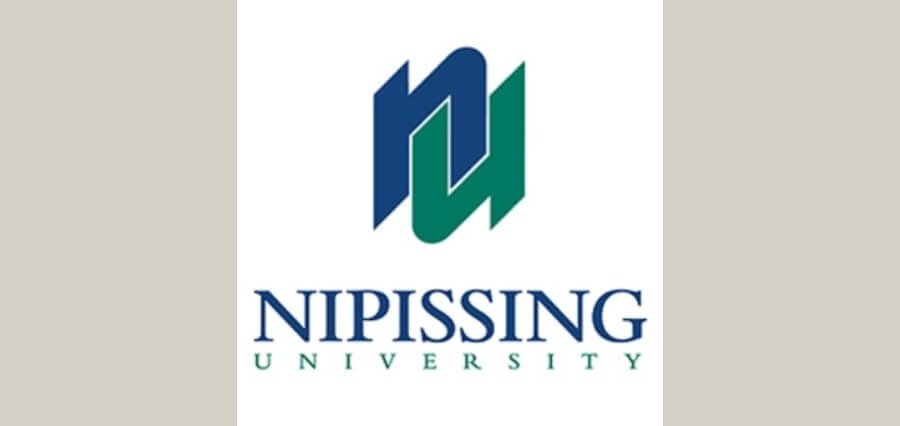“Journalism is printing what someone else does not want printed: everything else is public relations.”
– George Orwell
After hearing about journalism, most people acknowledge the reporter speaking about current events while holding a microphone in their hand. However, journalism is a means of reaching a wide audience and disseminating factual information.
Additionally, in today’s dynamic society, people have easy online access to any news or information. The journalist therefore has the ability to convince the audience of the correct message. Prior to today, the media’s only function has been to inform the public; nevertheless, they now also have the authority to determine guilt.
The need for journalism and mass communication has evolved as a result of the shifting environment, and to satisfy this need in the industry, many universities are offering cutting-edge journalism degrees in addition to comprehensive formal education for fearless and reliable journalists.
The Faculty of Journalism and Creative Studies of Jagran Lakecity University is one of the universities with the quickest growth. It is also one of the universities in central India with the highest number of honours. The university places a strong emphasis on practice-based education, which aids students in formulating plans and strategies for disseminating accurate information.
In our search for the ‘Leading Journalism and Mass Communication Schools in India, 2023,’ we came across the Faculty of Journalism and Creative Studies at Jagran Lakecity University. We spoke with Prof. Diwakar Shukla, the Dean of the Faculty of Journalism and Creative Studies. He discussed the history of the institute’s founding, its purpose, and its long-term goals in an interactive interview with The Knowledge Review Magazine.
Continue reading for more information about the university.
Please tell us about the journey of journalism and mass communication school since its inception.
Faculty of Journalism and Creative Studies started in 2013 in an environmentally friendly building at the center of the sprawling green campus of Jagran Lakecity University Bhopal. The building, then known as Block A, had its walls covered with English Ivy and opened up to spacious and sunlit classrooms and small media production studios. Journalism and Mass Communication education have always been at the centre stage of Jagran Lakecity University.
But that phase was preceded by some strong foundational media education work since 2009. After ten years of defining work, the Faculty of Journalism and Creative Studies has grown into the largest and most awarded Journalism and Creative Studies department in central India.
Jagran Lakecity University (JLU) Bhopal is a state-private university established under Section 2(f) of UGC Act 1956 and is based out of Bhopal, Madhya Pradesh.
JLU Bhopal is one of the fastest growing and one of the most awarded universities of Central India, having practice-based pedagogy at its core. Currently, the university is offering 50+ degree programs under five faculties to more than 2500 students and has a strong alumni network of over 3000 graduates from 8 countries and 27 states of India.
From 2013 onwards, the university began crafting its strategic plan as a media school under Jagran Lakecity University that will guide its efforts over the next ten years. Developing the plan then and the journey thereafter has been an all-hands effort, with input gathered from across India and globally, sharing ideas and insights for raising the Faculty of Journalism and Creative Studies to even greater heights.
Tell us the vision, mission, and core values of the school.
The mission of the Faculty of Journalism and Creative Studies at Jagran Lakecity University is to train the next generation towards career excellence in journalism, mass communication, design, visual arts, and creative pursuits both as academicians and practitioners.
We work to advance and enhance the development of society through the study and practice of Journalism, media communication and design. We pursue our mission through world-class teaching, practice-based pedagogy, multidisciplinary research and our shared commitment to collaboration that connects disciplines within the Faculty, across the University, and around the world.
We draw energy and inspiration from our global industry & academic partnerships to reinforce our core values of knowledge, collaboration, creativity, sensitivity, and diversity. We all firmly believe that journalism, visual arts, design, films, aesthetics and technology are fundamental for humanity, critical for community, and essential for prosperity.
Our Big Ideal is that we believe that the world would be a better place if we encourage big ideas and creativity and create an ecosystem of converting that communication and design ideas & creative sparks into defining changes and tell better stories.
What challenges has the journalism and mass communication school come across since its inception, and how did the school overcome them?
“We live in a world where media are omnipresent.” An increasing number of people spend a great deal of time watching television, reading newspapers and magazines, playing video games, learning via animation, experiencing events, and listening to the radio. In this context, media education has a huge role to play. Too often, the gap between the educational experience offered and the real world in which people live is disturbingly wide.
In line with this and the belief of the institute that a quality media education as a preparation for responsible citizenship is imperative, the Faculty of Journalism and Creative Studies looked at various opportunities and challenges and drafted a course of action for two phases of 5 years each.
This was supported by training courses for faculty members both to increase their knowledge and understanding of the media and train them in appropriate teaching methods, which would take into account the already considerable but fragmented acquaintance with media already possessed by many students.
The school strongly emphasises stimulating research and cross-disciplinary development activities for the benefit of media education.
The school’s top priorities, aligned with Jagran Lakecity University, were organized under four pillars: Student-centric approach, Global network connect, Intensive industry integration, and transform media education with skill-based interdisciplinary of media degrees. We back these pillars with initiatives that enrich campus experiences and innovative teaching and lead research in key selected areas.
As a leading journalism and mass communication school, what difference did the school make in the journalism and mass communication segment, and how did it help the upcoming generation?
Everyone is living in a time of unparalleled potential. Advancements like artificial intelligence, machine learning, big data and robotics are rapidly changing the way people think about and approach the world. At the same time, the world is facing unprecedented challenges in the environment, health, political climate, and social fabric.
The Faculty of Journalism and Creative Studies at Jagran Lakecity University prioritises the pursuit of a bold vision of influencing and impacting how the world connects today and tomorrow. The school invites people to explore the Jagran ecosystem for the study of journalism, diverse design areas like UX/ UI, graphic design, fashion and lifestyle design, advertising and PR, films, experiential marketing, entertainment, events, photography, animation, and digital media.
Faculty of Journalism and Creative Studies is a uniquely interdisciplinary graduate, postgraduate and doctoral studies hub that blends a variety of fields, experiential learning, innovation and technology. Combining state-of-the-art Shri Gurudev Gupta Media Production and Design studios with creative inspiration, we are pushing the boundaries of creative exploration. We empower the students to become the creative leaders of tomorrow.
The three schools under this Faculty are ‘Jagran School of Journalism and Communication’, ‘Jagran School of Design’ and ‘Jagran Wizcraft MIME School of Entertainment and Events’.
Research and Practice are two pivots of the faculty’s ecosystem, reflected in its centres of excellence and various projects to diverse student-led clubs and student media outlets that support interdisciplinary creative studies. Its ICMCD research conference annually contributes to the advancement of discourse around media research.
The members of the Faculty are committed to the training of the students and doctoral scholars. Students work closely with their tutors and studio mentors to create unique and important media assets and enjoy the support of other members who guide them in their portfolios and projects. The staff understands that they are training future colleagues, journalists, filmmakers, designers and media leaders, and the school’s commitment to excellence and collegiality permeates all the academic and practice endeavours. Students develop not only essential media, visual arts and design skills but also nurture their curiosity and research capabilities, for these are key to all media processes. The location in one of the best and greenest campuses and environs permits access to the rich abode of reflection, creativity and collaboration. They run the campus digital radio Lakecity Voice, campus digital channel Lakecity Live, Podcast Lakecity Buzz and newspaper Comma. Supporting the academics are student clubs of journalism, Animation, Advertising & PR, experiential marketing, Photography and Design Hive. Its marquee annual events like the JLU International Festival of Media and Design, Global Photography Competition Masterclicks, Designthon and International. Student Journalist Competitions have made a mark on the media education space in India and globally.
The students and alumni are working with top media organisations in India and internationally and have excelled in industry, academia, journalism, films, design, entertainment and events, media entrepreneurship, visual arts, advertising, social communications, media production, digital communications and Public Relations and a wide array of creative careers. Just as those who have gone before, today’s Faculty of Journalism and Creative Studies students will be well prepared to meet the exciting challenges and enjoy the rewards that a career in journalism and creative industries provide.
What advice would the school provide to future generations to become an inspiring journalist?
Be curious, know the contours of change, observe and build the capabilities to connect the dots and overall know the purpose of change that a journalist facilitates. It’s not about just reporting but reporting with an unbiased lens and then following up on that news. Rather than running away, embrace humility and media technology that makes media consumption and media literacy more purposeful. It’s not a 100-meter sprint but a marathon that drains the energy yet brings out the best of the human spirit of endurance, impact, and joy. With the world changing and digital pathways overwhelming, the need to be true, unbiased and factual is even more. The pathways are challenging, but rewards both in joy and careers are immense.
How do you envision the future of journalism and the school as well?
I would like to reiterate our Big Ideal again here. Our Big Ideal is that we believe that the world would be a better place if we encourage big ideas & creativity and create an ecosystem of converting those communications & design ideas & creative sparks into defining changes and telling better stories.
Faculty of Journalism and Creative Studies aims to be the catalyst of such an ecosystem. On the back of some amazing work, collaboration and effort, we are already in the top 15 best media education institutions in India. With the pathway that we have charted and the vision we have seen, we not only shall be in even higher consideration by students and influencers not just in India but in the Asia Pacific too. But more importantly, I see our happiness in being the most impactful media education institution in future.









